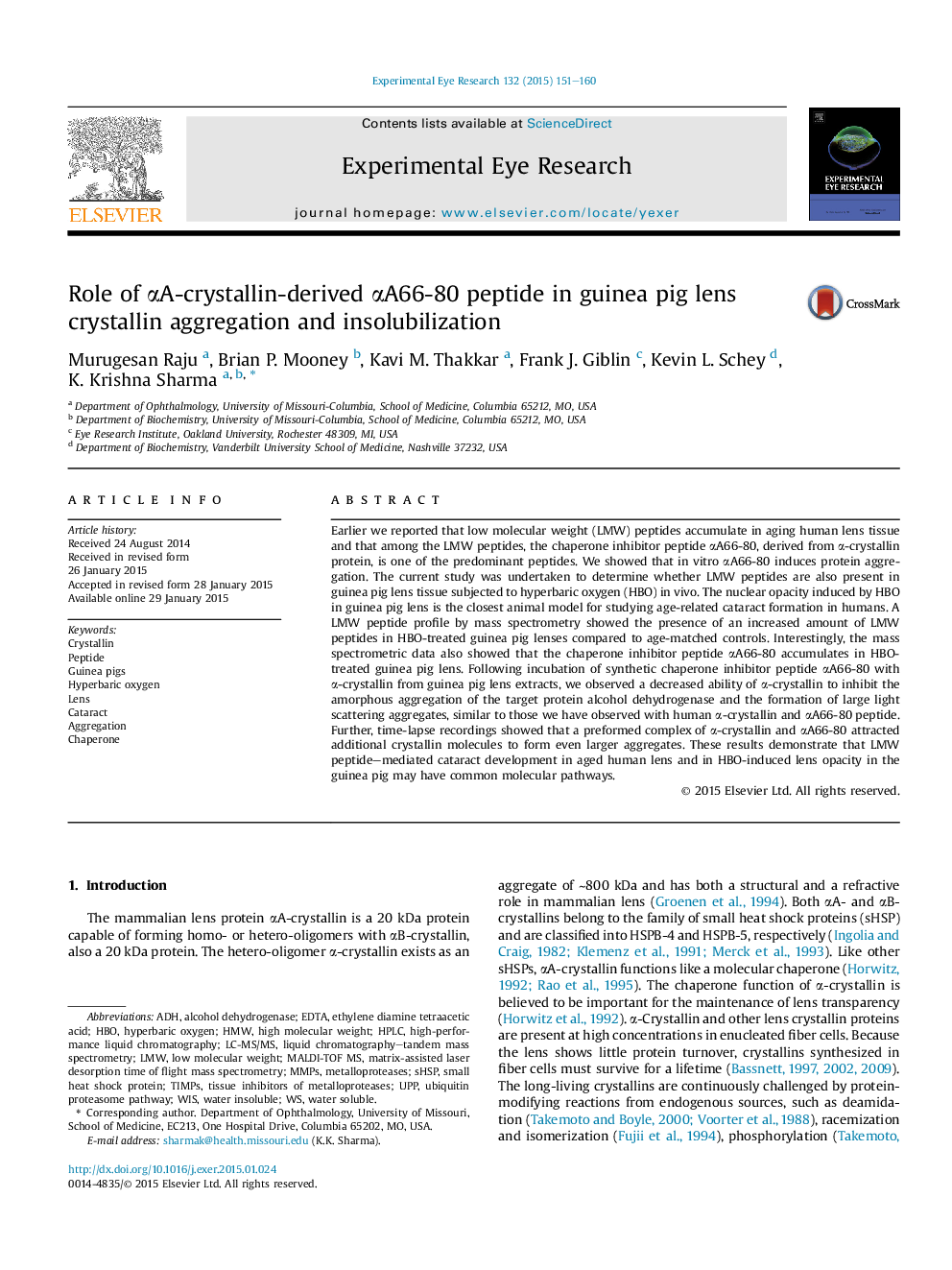| کد مقاله | کد نشریه | سال انتشار | مقاله انگلیسی | نسخه تمام متن |
|---|---|---|---|---|
| 6196632 | 1602590 | 2015 | 10 صفحه PDF | دانلود رایگان |

- Crystallin-derived peptides concentration increases in lenses after HBO treatment of Guinea pigs.
- Alpha A-crystallin 66-80 peptide found in HBO-induced cataract lenses inhibits chaperone activity of aloha-crystallin.
- Alpha-crystallins aggregates and precipitates when treated with Alpha A-crystallin 66-80 peptide.
- Crystallin-fragment induced protein aggregation appears to have a role in HBO-treatment induced Guinea pig cataract formation.
Earlier we reported that low molecular weight (LMW) peptides accumulate in aging human lens tissue and that among the LMW peptides, the chaperone inhibitor peptide αA66-80, derived from α-crystallin protein, is one of the predominant peptides. We showed that in vitro αA66-80 induces protein aggregation. The current study was undertaken to determine whether LMW peptides are also present in guinea pig lens tissue subjected to hyperbaric oxygen (HBO) in vivo. The nuclear opacity induced by HBO in guinea pig lens is the closest animal model for studying age-related cataract formation in humans. A LMW peptide profile by mass spectrometry showed the presence of an increased amount of LMW peptides in HBO-treated guinea pig lenses compared to age-matched controls. Interestingly, the mass spectrometric data also showed that the chaperone inhibitor peptide αA66-80 accumulates in HBO-treated guinea pig lens. Following incubation of synthetic chaperone inhibitor peptide αA66-80 with α-crystallin from guinea pig lens extracts, we observed a decreased ability of α-crystallin to inhibit the amorphous aggregation of the target protein alcohol dehydrogenase and the formation of large light scattering aggregates, similar to those we have observed with human α-crystallin and αA66-80 peptide. Further, time-lapse recordings showed that a preformed complex of α-crystallin and αA66-80 attracted additional crystallin molecules to form even larger aggregates. These results demonstrate that LMW peptide-mediated cataract development in aged human lens and in HBO-induced lens opacity in the guinea pig may have common molecular pathways.
Journal: Experimental Eye Research - Volume 132, March 2015, Pages 151-160